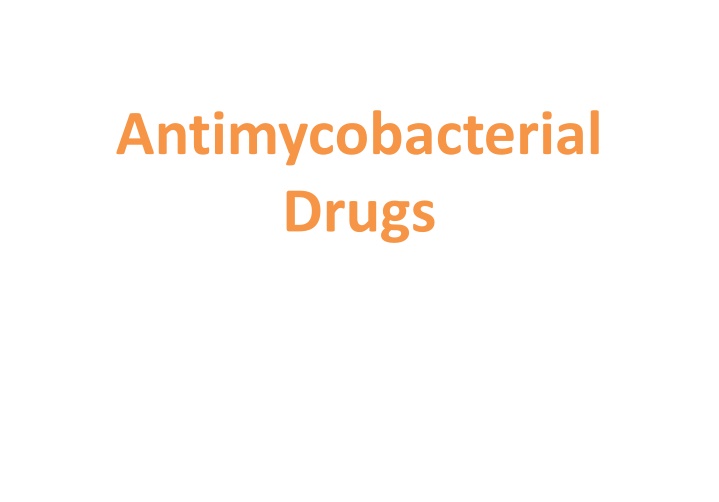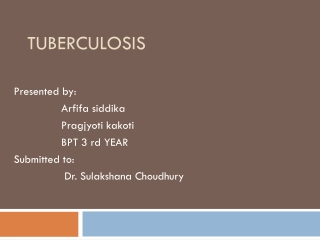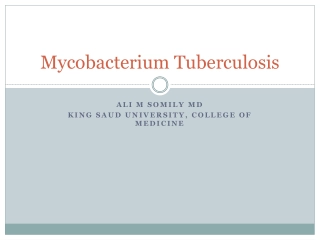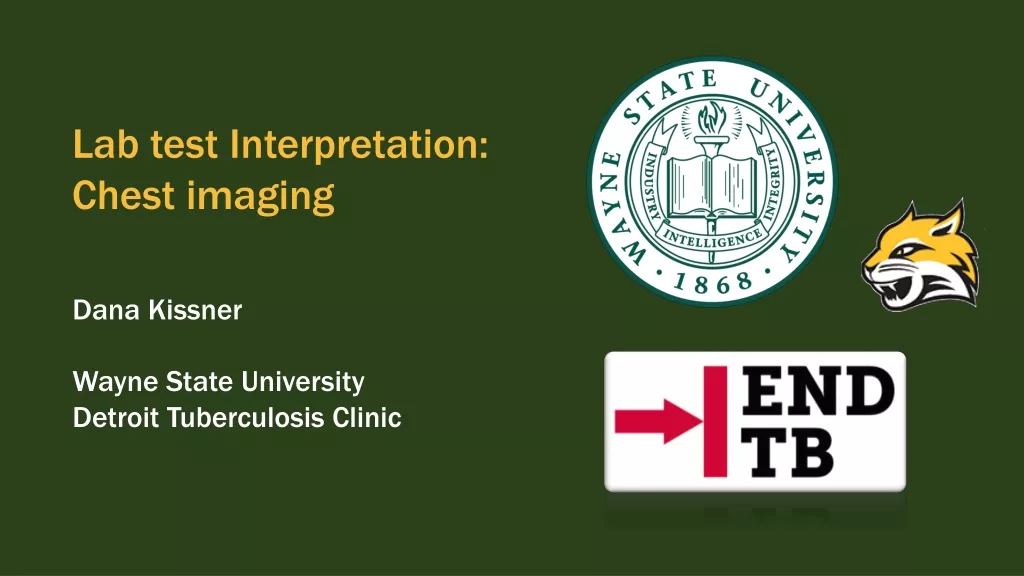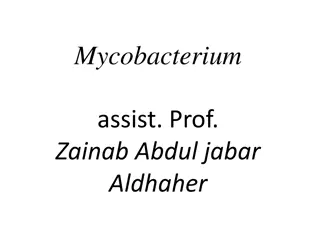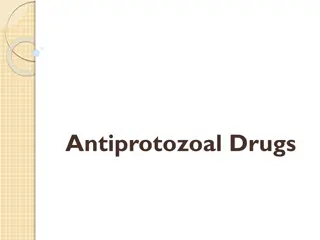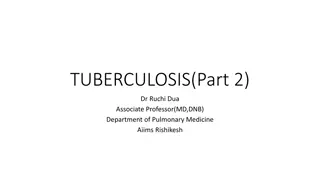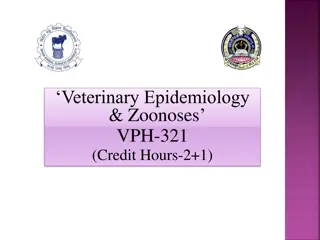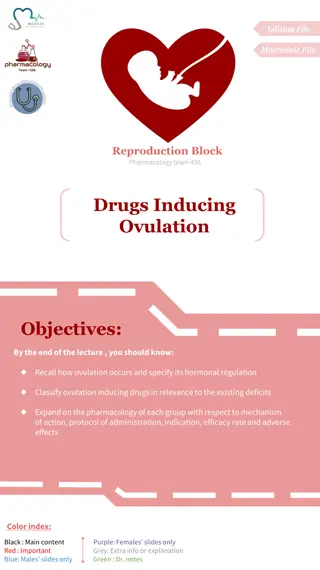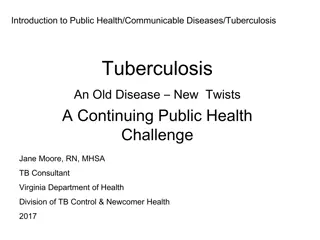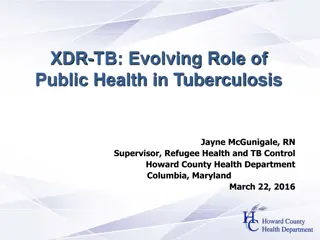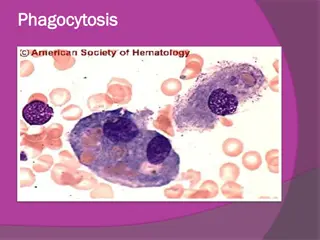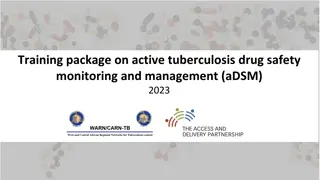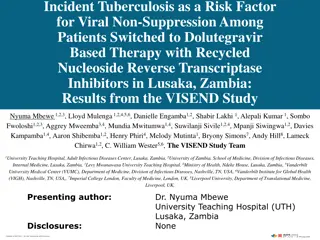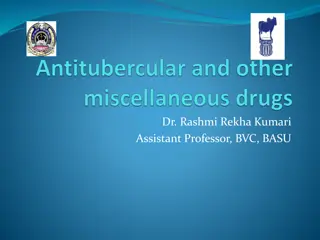Treating Tuberculosis: Understanding Antimycobacterial Drugs
Tuberculosis, caused by Mycobacterium tuberculosis, requires a combination of drugs for effective treatment due to bacterial resistance. Learn about first-line and second-line drugs like Isoniazid and their mechanisms of action.
Download Presentation

Please find below an Image/Link to download the presentation.
The content on the website is provided AS IS for your information and personal use only. It may not be sold, licensed, or shared on other websites without obtaining consent from the author.If you encounter any issues during the download, it is possible that the publisher has removed the file from their server.
You are allowed to download the files provided on this website for personal or commercial use, subject to the condition that they are used lawfully. All files are the property of their respective owners.
The content on the website is provided AS IS for your information and personal use only. It may not be sold, licensed, or shared on other websites without obtaining consent from the author.
E N D
Presentation Transcript
Antimycobacterial Drugs
Tuberculosis (TB) is an infectious disease caused by the bacterium Mycobacterium tuberculosis (MTB). Tuberculosis generally affects the lungs. Most infections do not have symptoms; in which case it is known as latent tuberculosis. 10% of latent infections progress to active disease which, if left untreated, kills about half of those infected. The classic symptoms of active TB are a chronic cough with blood-containing sputum, fever, night sweats, and weight loss..
Mycobacteria are resistant to most antibiotics because: 1. they grow more slowly than other bacteria. 2. Mycobacterial cells can also be dormant and thus completely resistant to many drugs. 3. mycobacterial cell wall is impermeable to many agents. 4. Mycobacterial species are intracellular pathogens 5. mycobacteria are notorious for their ability to develop resistance.
So T.B treatment characterized by: two or more drugs are required to overcome these obstacles and to prevent emergence of resistance during the course of therapy. The response of mycobacterial infections to chemotherapy is slow, and treatment must be administered for months to years.
TB treatment generally includes: 1. first-line drugs: Rifampin, Isoniazid , Ethambutol, , Pyrazinamide. 2. (streptomycin, kanamycin, or amikacin) or capreomycin (all injectable agents), a fluoroquinolone (typically levofloxacin or moxifloxacin). are typically less effective, more toxic. less extensively studied. They are used for patients who cannot tolerate the first-line drugs or who are infected with resistant TB. Second-line drugs: include an aminoglycoside
A. Isoniazid (INH) Isoniazid along with rifampin, is one of the two most important TB drugs. 1. Mechanism of action: Isoniazid is a prodrug activated by a mycobacterial catalase peroxidase (KatG). Isoniazid targets the enzymes acyl carrier protein reductase (InhA) and (KasA), essential for the synthesis of mycolic acid. Inhibiting mycolic acid leads to a disruption in the bacterial cell wall. -ketoacyl-ACP synthase
2. Pharmacokinetics Isoniazid administration. Absorption is impaired if isoniazid is taken with food. The drug diffuses into all body fluids, cells, and caseous material (necrotic tissue resembling cheese that is produced in tuberculous lesions). Isoniazid undergoes N-acetylation and hydrolysis, resulting in inactive products. is readily absorbed after oral
3.Adverse effects: Hepatitis is the most serious adverse effect, fatal. Peripheral neuropathy (manifesting as paresthesia of the hands and feet) appears to be due to a relative pyridoxine deficiency. Central nervous system (CNS) adverse effects can occur, including convulsions in patients prone to seizures. it can be
B. Rifamycins: rifampin, rifabutin, and rifapentine Rifampin, rifabutin, and considered rifamycins, a group of structurally similar macrocyclic antibiotics, which are first-line oral agents for tuberculosis. rifapentine are all
Rifampin Rifampin has broader antimicrobial activity than isoniazid and can be used as part of treatment for several different bacterial infections. It is never given as a single agent in the treatment of active tuberculosis.
a. Mechanism of action Rifampin blocks RNA transcription by interacting with the subunit of mycobacterial DNA-dependent RNApolymerase.
RifampinAntimicrobial spectrum bactericidal for both intracellular and extracellular mycobacteria, including M. tuberculosis. It is effective against many gram-positive and gram-negative organisms prophylactically for individuals meningitis caused Haemophilus influenzae. Rifampin also is highly active against M. leprae. and is used exposed to or by meningococci
d. Rifampin Pharmacokinetics Absorption is adequate after oral administration. Distribution occurs to all body fluids and organs. induce hepatic cytochrome P450 enzymes leading to numerous drug interactions. Elimination is primarily through the bile and into the feces. Urine, feces, and other secretions have an orange-red color, so forewarned. patients should be
Rifampin Adverse effects The most common adverse reactions include nausea, vomiting, and rash. Hepatitis and death due to liver failure are rare. the incidence of hepatic dysfunction increase when rifampin is coadministered with isoniazid. When rifampin is dosed intermittently, especially.
D. Pyrazinamide used in combination with isoniazid, rifampin, and ethambutol. The precise mechanism of action is unclear. Pyrazinamide is active against tuberculosis bacilli in acidic lesions and in macrophages. The drug distributes throughout the body, penetrating the CSF. Pyrazinamide may contribute to liver toxicity. Most of the clinical benefit from pyrazinamide occurs early in treatment. Therefore, this drug is usually discontinued after 2 months of a 6-month regimen. Pyrazinamide
E. Ethambutol Ethambutol mycobacteria. transferase an enzyme important for the synthesis of the mycobacterial cell wall. Ethambutol is used pyrazinamide, isoniazid, and rifampin pending culture and susceptibility data. Ethambutol is well distributed throughout the body. Both the parent drug and metabolites are primarily excreted in the urine. The most is bacteriostatic and specific for Ethambutol inhibits arabinosyl in combination with
important adverse effect is optic neuritis, which results in diminished visual acuity and loss of ability to discriminate between red and green. Visual acuity and color discrimination should be tested prior to initiating therapy and periodically thereafter.
